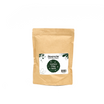Adjusting Nutrients with Fertilizer: A Guide to Healthy Soil & Thriving Plants


WWhy is Fertilizer Necessary?
In nature, animal waste and decomposed plants naturally replenish the soil with essential nutrients, sustaining the ecosystem. When humans cultivate crops, we disrupt this cycle because the harvested crops don’t return their nutrients to the soil. This leads to nutrient depletion, making it necessary to add organic matter like compost or plant food to restore soil fertility.Soil management aims to create an ideal environment for plant growth. Compost and humus enrich the soil, helping plants absorb nutrients effectively. It’s crucial to provide the right fertilizers, which include three major elements—nitrogen, phosphorus, and potassium—along with various trace elements to ensure optimal plant growth.

Why does our partnership matters
For every purchase, we plant 1 TREE to nurture our planet 🌲Together, we are sowing the seeds of change and cultivating a greener, more sustainable world.
Anything else?
Anything else?You willl also receive an official certificate from Greenspark as a token of appreciation for your commitment to the environment! 📜
How do we see the progress?
How do we see the progress?Join us on this remarkable journey towards an impact dashboard.You can see how your eco-smart choice made the world a better place
 View more
View more
Your support empowers reforestation, fights climate change,
and paves the way for a brighter, eco-friendly future.
Join us on this remarkable journey towards a cleaner,healthier planet.
Shop with a purpose, shop with Reencle! 🛒💚

Why does our partnership matters
For every purchase, we plant 1 TREE to nurture our planet 🌲Together, we are sowing the seeds of change and cultivating a greener, more sustainable world.
Anything else?
Anything else?You willl also receive an official certificate from Greenspark as a token of appreciation for your commitment to the environment! 📜
How do we see the progress?
How do we see the progress?Join us on this remarkable journey towards an impact dashboard.You can see how your eco-smart choice made the world a better place
 View more
View more
Your support empowers reforestation, fights climate change,
and paves the way for a brighter, eco-friendly future.
Join us on this remarkable journey towards a cleaner,healthier planet.
Shop with a purpose, shop with Reencle! 🛒💚
1. The Three Essential Elements of Fertilizer
For plants to flourish, they need three primary nutrients:
- Nitrogen (N)
- Phosphorus (P)
- Potassium (K)
These are known as the "three elements of plant food." Nitrogen is particularly important for the taste of vegetables. Many believe that organically grown vegetables taste better, but the key is that crops need to absorb nitrogen slowly during their growth for the best flavor and nutrition.Organic fertilizers, made from animal and plant materials, are generally considered environmentally friendly.
However, if made from imported materials, they can introduce foreign nutrients into the local environment and may contain high levels of phosphorus, which can accumulate in the soil. On the other hand, mineral plant foods, when applied as needed, can have a lesser environmental impact. Both types have their benefits, so it's best to use them effectively without bias.
1. The Three Essential Elements of Fertilizer
For plants to flourish, they need three primary nutrients: nitrogen (N), phosphorus (P), and potassium (K).
These are known as the "three elements of plant food." Nitrogen is particularly important for the taste of vegetables.
Many believe that organically grown vegetables taste better, but the key is that crops need to absorb nitrogen slowly during their growth for the best flavor and nutrition.Organic fertilizers, made from animal and plant materials, are generally considered environmentally friendly.
However, if made from imported materials, they can introduce foreign nutrients into the local environment and may contain high levels of phosphorus, which can accumulate in the soil. On the other hand, mineral plant foods, when applied as needed, can have a lesser environmental impact. Both types have their benefits, so it's best to use them effectively without bias.
2. Assessing Fertilizer Effectiveness
The balance of plant food components should be adjusted based on the needs of different crops and their growth periods. Here’s how to assess and apply fertilizers effectively:
Early Growth
For crops with vigorous early growth, base fertilizers are essential. Crops like radishes, lettuce, spinach, onions, and cabbage benefit from base fertilizers and additional top dressings as they grow.
Periodic Top Dressings
Summer vegetables like tomatoes and eggplants need regular top dressings throughout their growth. Apply in small amounts frequently. Other examples include bell peppers, leeks, celery, and scallions.
Later Stages of Growth
Crops with slow initial growth or those that don’t develop well initially need fewer base fertilizers. Instead, use top dressings from the mid to late growth stages. Examples include strawberries, broccoli, pumpkins, turnips, and burdocks.
4. Nutrient Requirements by Growth Stage
Plants need different nutrients at various growth stages:
Stem and Leaf Growth: Nitrogen
Flower and Fruit Formation: Phosphorus
Root Growth: Potassium
Carefully adjusting fertilizer applications according to these stages ensures plants absorb the necessary nutrients at the right times, promoting healthy and productive growth.
4. Conclusion
By understanding and applying these practices, you can maintain healthy soil and ensure your plants thrive. The key to a productive and sustainable garden lies in balancing the right nutrients, whether through organic or mineral plant foods. Each has its unique benefits, and using them effectively can create an environment where plants flourish, contributing to a greener and more sustainable world. Happy gardening!
2. Assessing Fertilizer Effectiveness
The balance of plant food components should be adjusted based on the needs of different crops and their growth periods. Here’s how to assess and apply fertilizers effectively:
- Early Growth: For crops with vigorous early growth, base fertilizers are essential. Crops like radishes, lettuce, spinach, onions, and cabbage benefit from base fertilizers and additional top dressings as they grow.
- Periodic Top Dressings: Summer vegetables like tomatoes and eggplants need regular top dressings throughout their growth. Apply in small amounts frequently. Other examples include bell peppers, leeks, celery, and scallions.
- Later Stages of Growth: Crops with slow initial growth or those that don’t develop well initially need fewer base fertilizers. Instead, use top dressings from the mid to late growth stages. Examples include strawberries, broccoli, pumpkins, turnips, and burdocks.
4. Nutrient Requirements by Growth Stage
Plants need different nutrients at various growth stages:
Stem and Leaf Growth: Nitrogen
Flower and Fruit Formation: Phosphorus
Root Growth: Potassium
Carefully adjusting fertilizer applications according to these stages ensures plants absorb the necessary nutrients at the right times, promoting healthy and productive growth.
4. Conclusion
By understanding and applying these practices, you can maintain healthy soil and ensure your plants thrive. The key to a productive and sustainable garden lies in balancing the right nutrients, whether through organic or mineral plant foods. Each has its unique benefits, and using them effectively can create an environment where plants flourish, contributing to a greener and more sustainable world. Happy gardening!











